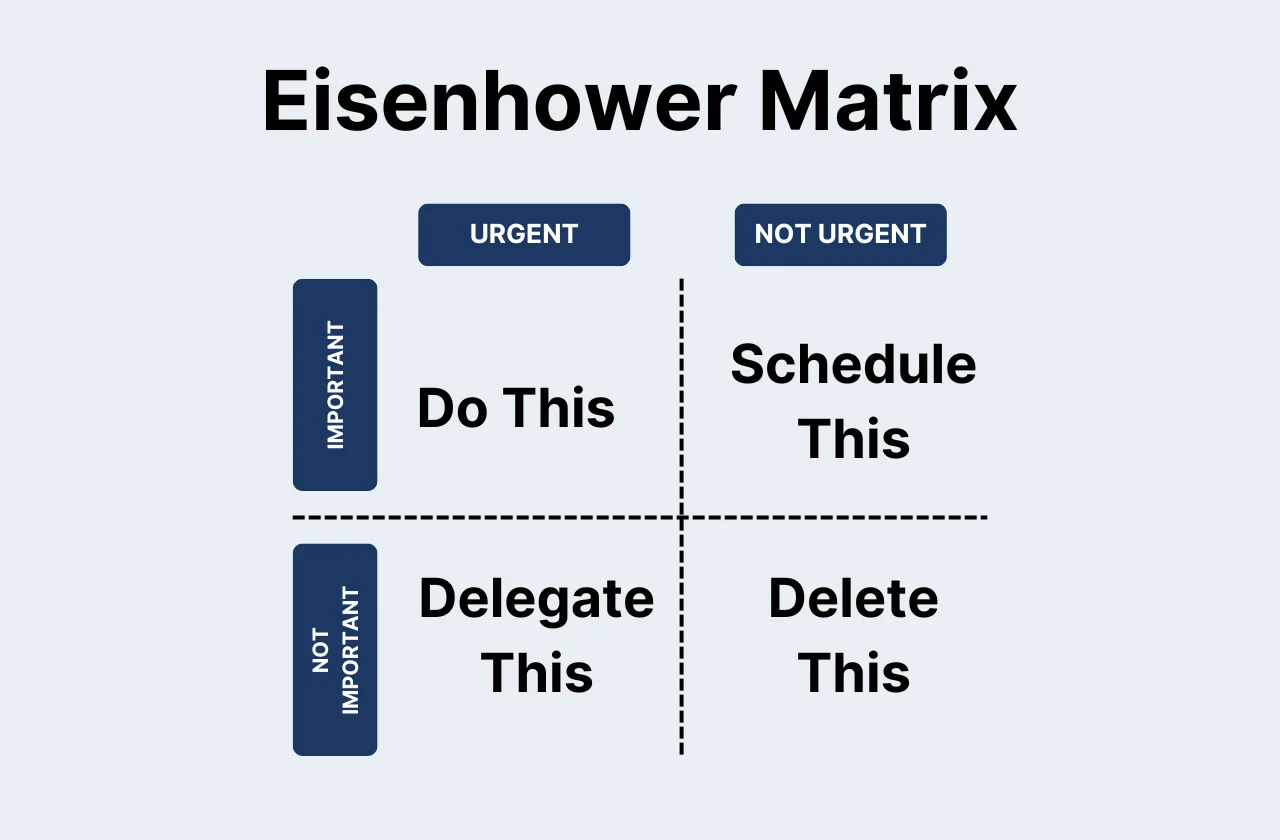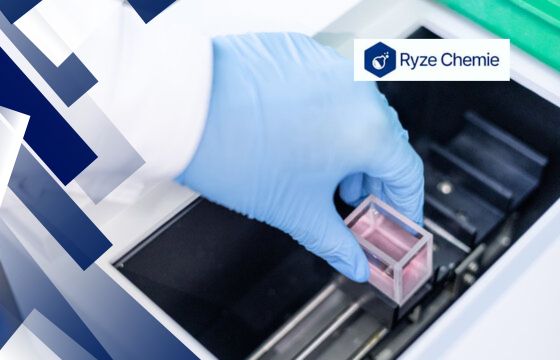
Stay up-to date on the
latest blogs. Join our
newsletter today!
This site is protected by reCAPTCHA and the Google Privacy Policy and Terms of Service apply.
How Do You Deal With A Lot Of Competing Priorities

Written by Team Ryze Chemie
8 mins read · May 29, 2024

Laboratory work often throws up multiple tasks at once. You need to analyze samples, prepare reagents, maintain equipment, and more, all within tight deadlines. We understand that juggling these priorities can be stressful and lead to errors.
That's why we've put together this article. In it, we share practical tips and strategies to help you manage your workload effectively and reduce stress.
You'll learn how to prioritize tasks, delegate when possible, and use time management tools to your advantage.
Understanding Your Priorities
The lab throws tasks at you, some urgent and demanding immediate action, while others are important for the long haul. We need to distinguish between these different types of priorities and how to manage them:
Types of Priorities:
Urgent vs. Important:
Some tasks scream for your attention right now – a chemical reaction gone awry, a broken piece of equipment. These are urgent. Other tasks, like planning your next experiment or reviewing safety procedures, are crucial for long-term success but may not have a deadline looming. These are important. The trick is to balance both.
Safety First:
Safety is not optional. It's the foundation of everything you do. Always wear your protective gear, follow protocols, and report any concerns. If something feels unsafe, stop and ask questions. No experiment is worth risking your health.
Experimental Deadlines:
Your research has goals and timelines. Stay on track by creating a schedule for your experiments, and be realistic about what you can achieve. Communicate with your team if you're falling behind.
Routine Tasks:
Cleaning glassware, calibrating instruments, documenting your work – these might not be exciting, but they're essential. Set aside time each day for these tasks. A well-maintained lab is a productive lab.
The Eisenhower Matrix: Your Prioritization Tool
A simple way to sort through your tasks is to use the Eisenhower Matrix. Draw a box and divide it into four equal squares. Label them:
- Do (Urgent & Important): These tasks get your immediate attention.
- Schedule (Important, Not Urgent): Block out time on your calendar for these.
- Delegate (Urgent, Not Important): If you can, hand these off to someone else.
- Eliminate (Not Urgent, Not Important): Don't waste time on these!

Quadrant 1: Do (Urgent & Important)
These tasks need action now. Think: emergency responses, unexpected results that demand immediate analysis, or a deadline that's suddenly upon you.
Quadrant 2: Schedule (Important, Not Urgent)
This is where your important, long-term work lives. Examples include planning future experiments, reading up on the latest research, or taking a course to boost your skills.
Quadrant 3: Delegate (Urgent, Not Important)
These are tasks that need to be done, but maybe not by you. Some administrative duties, specific lab chores – if you can share the load, do it.
Quadrant 4: Eliminate (Not Urgent, Not Important)
This is the time-wasting zone. We all have those little distractions. If it's not helping you achieve your goals, cut it out.
Now that we've established a framework for understanding your priorities, let's dive into the practical side of managing a hefty workload when multiple tasks compete for your attention.
How Do You Deal With A Lot Of Competing Priorities
Laboratory work often means juggling many tasks at once. How do you handle a packed schedule? Here are some tips to help you stay on top of your priorities:
1) Start with a Plan:
- Daily To-Do Lists: Break down large projects into smaller, manageable tasks. This makes your workload seem less daunting and helps you track your progress. Instead of writing "Analyze soil samples," list the individual steps: "Prepare samples," "Run GC-MS," "Interpret results."
- Time Blocking: Set aside specific times for different activities. Block out an hour for lab work, 30 minutes for data analysis, and so on. This helps you focus on one task at a time and avoid distractions.
2) Be Realistic:
- Estimate Time: Some tasks take longer than others. Don't underestimate the time required for complex experiments or analyses. Be honest with yourself about how much you can realistically achieve in a day.
- Build in Buffer Time: Leave some extra time in your schedule for unexpected delays or interruptions. Equipment malfunctions, unexpected meetings, or spills can all throw off your plans.
3) Adapt and Adjust:
- Reassess Priorities: Your to-do list isn't set in stone. Review it regularly and adjust it as needed. New projects may arise, deadlines may shift, and priorities may change. Be flexible and willing to adapt.
- Learn to Say No: Don't overload yourself with too many commitments. It's okay to politely decline additional tasks if your plate is full. You'll be more effective if you focus on doing a few things well instead of spreading yourself too thin.
4) Leverage Technology:
- Lab Management Software: Many software tools can help you stay organized. Use them to track experiments, manage inventory, collaborate with colleagues, and streamline your workflow. This can save you time and reduce stress.
- Calendars and Reminders: Use digital calendars and reminders to keep track of deadlines and important meetings. Set alarms to give yourself plenty of notice before a deadline approaches.
By following these tips, you can better manage your workload and reduce the stress of competing priorities. Remember, organization and planning are key to success in the lab. Stay focused, be adaptable, and don't be afraid to ask for help when you need it. With the right strategies, you can tackle even the most challenging days with confidence.
With these organizational strategies in place, it's crucial not to overlook the aspect that underpins all successful lab work: safety. Let's explore how prioritization can be a powerful tool for minimizing risk and ensuring a secure working environment.
Prioritization for Safety
Safety should be your top priority when you work with chemicals in a laboratory setting. Chemicals have the potential to cause harm if they are not handled properly. By following some simple guidelines, you can help to ensure your safety and the safety of others:
1) Risk Assessment:
Think of risk assessment as planning a road trip. You wouldn't just hop in the car and drive without knowing the route, would you? Same goes for your experiments. Before you even open a bottle, take a moment to map out the risks.
- What could go wrong? Think about spills, reactions getting out of hand, or unexpected hazards.
- How likely is it to happen? Some things are more common than others. Rank your risks from "rare" to "could happen any day."
- What's the worst-case scenario? It's better to be over-prepared than caught off guard.
Once you know your risks, you can take steps to minimize them. It's like packing a spare tire for that road trip – you hope you won't need it, but it's good to have just in case.
2) Safety Checks:
Imagine you're driving down the highway and a dashboard light comes on. Would you keep driving and hope for the best? Of course not! You'd pull over and check it out.
Safety checks are your lab's dashboard lights. They might seem like a hassle when you're eager to get results, but they're crucial. Take a few minutes to:
- Double-check your equipment: Make sure everything is working properly and in good condition.
- Review your procedure: Are you following the steps correctly?
- Look out for any hazards: Is anything out of place or potentially dangerous?
A quick safety check can prevent a major mishap. It's like taking a few minutes to stretch your legs on a long drive – it helps you stay refreshed and alert.
3) Incident Reporting:
Have you ever seen a car accident and thought, "I hope someone called 911"? In the lab, incident reporting is our 911 call. It's not about blame, it's about learning and preventing future accidents.
Even if it's a small spill or a near-miss, report it. By sharing what happened, you help everyone in the lab become aware of potential risks. It's like a road sign that warns other drivers about a dangerous curve ahead.
4) Training:
Remember when you first got your driver's license? You probably took a few lessons to learn the rules of the road and how to handle different situations.
Safety training is like a driver's ed for the lab. It keeps your knowledge up-to-date and helps you develop good safety habits. It's like brushing up on your parallel parking skills – it might seem unnecessary, but it comes in handy when you least expect it.
By incorporating these safety-focused prioritization methods into your daily routine, you'll create a lab environment that not only fosters productivity but also ensures the well-being of everyone involved.
Conclusion
Remember, each day brings a new set of priorities. The key is to find what works best for you. Some days, you might need to focus on one task before moving on to the next. Other days, you might be able to juggle multiple tasks at once. With a little bit of practice and patience, you will find that you can handle anything that comes your way. The skills you develop in managing priorities in the lab will also serve you well in your personal life. With the right approach, you can succeed.
Latest Blogs








